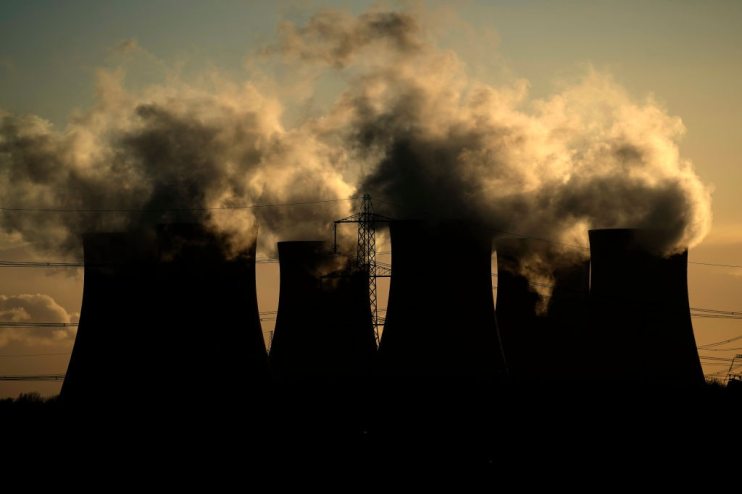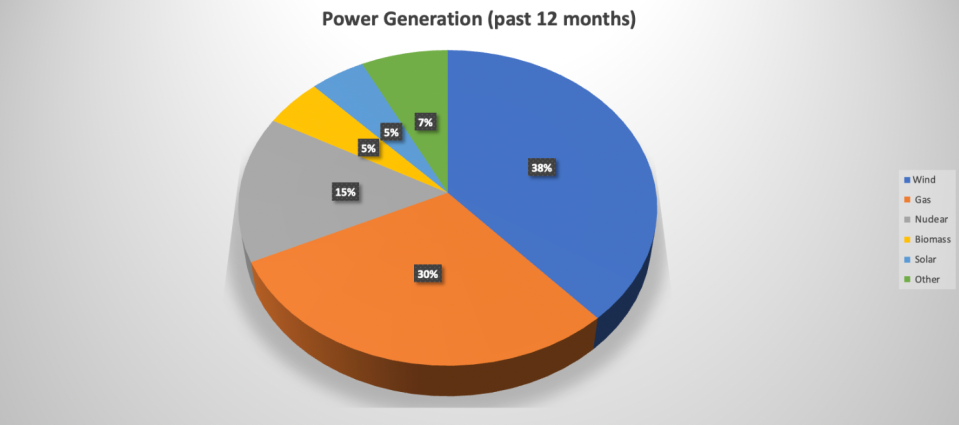Drax given biomass boost but support comes with strings attached

Drax has been given a fresh boost for its biomass ambitions by the government, which has paved the way to funding biomass, involving burning renewable sources such as wood, beyond its current subsidy regimes.
This means targeting industrials, transport and off-grid heating as key sectors to benefit from the energy source.
However, there are strings attached, with a new report calling for medium to long term funding and developments to be tied to its green credentials.
The government has told Drax that its energy production must be balanced out by biomass carbon capture technologies – known as BECCS – to contain emissions.
Why Drax are the big winners
Climate minister Graham Stuart considered the power source’s potential to be “extraordinary” for providing low carbon energy across transport, heat and electricity.
In the report’s foreword he said: “It can deliver low carbon energy, displace fossil fuel use in materials, and produce negative emissions when combined with carbon capture and storage. This strategy, which builds on the Biomass policy statement published in November 2021, explains how we aim to leverage that potential.”
The government will continue to support new biomass projects with incumbent sustainability rules established in 2018, which Drax has passed for its projects.
However, more stringent sustainability criteria will be established through an upcoming consultation – which will likely impose carbon capture requirements on projects.
When approached for comment, a government spokesperson said: “When used carefully, sustainable biomass is a versatile resource and a potential alternative to fossil fuels for power, heating and transport.

“Our new strategy sets out the role this can play in multiple UK sectors, such as industry and aviation, and alongside carbon capture and storage, it will help cut emissions while creating jobs, growing the economy and strengthening Britain’s energy security.”
Will Gardiner, Drax chief executive, welcomed what he perceived as the government’s “clear support for sustainably sourced biomass and the critical role that BECCS can play in achieving the country’s climate goals.”
“The inclusion of BECCS at the top of a priority use framework is a clear signal that the UK wants to be a leader in carbon removals and Drax is ready to deliver on this ambition,” he said.
Experts divided over biomass strategy
Professor Patricia Thornley, a director and researcher at Aston University, said: “This is a comprehensive and considered biomass strategy that, rightly, places sustainability at the heart of UK bioenergy development. The challenge is now to produce actions that can deliver the sustainable system of biomass required to achieve net zero.”
However, Lydia Collas, senior policy analyst at environmental think tank Green Alliance, raised concerns over the report’s latest findings, warning that it failed to address concerns about pressures on land for generating resources for biomass.
“The government’s new biomass strategy dodges tough questions about what we should stop using land for if we want to make space for biomass, leaving these to the forthcoming the Land Use Framework. It even misses the opportunity to release the 26,000 hectares of land used to produce biofuels, which have been made obsolete by cheap-to-run and less polluting electric vehicles,” she told City A.M..
Matt Williams, campaigner for Cut Carbon Not Forests, was more sceptical that the report was encouraging for Drax, arguing that the strategy “blows a lot of hot air about bioenergy, but contains no new fnding.”
He said: “It also shows that the government is aware of a major risk: by 2050 the UK may only have just over half of the biomass it needs to meet demand. Betting our energy system, and net zero, on bioenergy is a very risky gamble – we’d be better off with far more secure supplies of home-grown energy like wind and solar.”
Drax pushes government for BECCS approval
Drax is currently the UK’s largest operator of biomass generation, burning imported wood pellets from overseas to power four generating units at its flagship power station in North Yorkshire.
It is locked in talks with the government, hoping to secure funding reassurances over its legacy generators, as it looks to spend £2bn upgrading its biomass units with carbon capture and storage capabilities.
The project missed early approval from the government in its first stage process, and has not yet been shortlisted for its second stage either – with offshore projects in the Humber region and Scotland so far preferred.
The government plans to deliver five million metric tonnes of carbon removals by the end of the decade, which could increase to 23Mt by 2035 and up to 81Mt by 2050 – when BECCS is expected to provide the majority of the total in 2050.
Biomass generation is considered a renewable energy source by the government, because new trees are planted to replace old ones used in sourcing wood.
These new trees are expected to recapture the carbon emitted by burning the pellets.

When used in high-efficiency wood pellet stoves and boilers, biomass pellets can offer combustion efficiency as high as 85 per cent – making it highly prolific as an energy source.
There is also a carbon saving in clearing out residue such as forestry leavings and sawmill shavings which could otherwise release more emissions intensive methane gas.
Overall, Drax’s biomass power plant is responsible for around 11 per cent of the UK’s renewable power, helping to tide over government energy supplies last winter.
However, recapturing the carbon from wood pellets takes decades, and the off-setting can only work if the pellets are made with wood from sustainable sources.
It also produces high emissions of carbon dioxide per unit of energy – rivalling fossil fuels – with Drax’s biomass plant the single largest CO2 emitting power plant in the UK, responsible for 12.1 metric tonnes of CO2 according to climate analyst Ember.
In recent months, Drax has been accused by the BBC of harvesting old, carbon rich trees for energy generation and by news agency Bloomberg of gaming the system to hold off returning funds to billpayers from a government-supported transmission unit – both claims it denies.
Drax reported profits of £731m in 2022, up from £398m in 2021 as it cashed in on soaring power prices.
Collectively, it has received £6bn in green energy subsidies from British taxpayers over the last four-decades – including £617m last year.
Its current subsidy arrangements with the government conclude in 2027.
Drax’s share price has risen 1.43 per cent in this afternoon’s trading on the London Stock Exchange, and is currently priced at 581.6p per share on the FTSE 250.